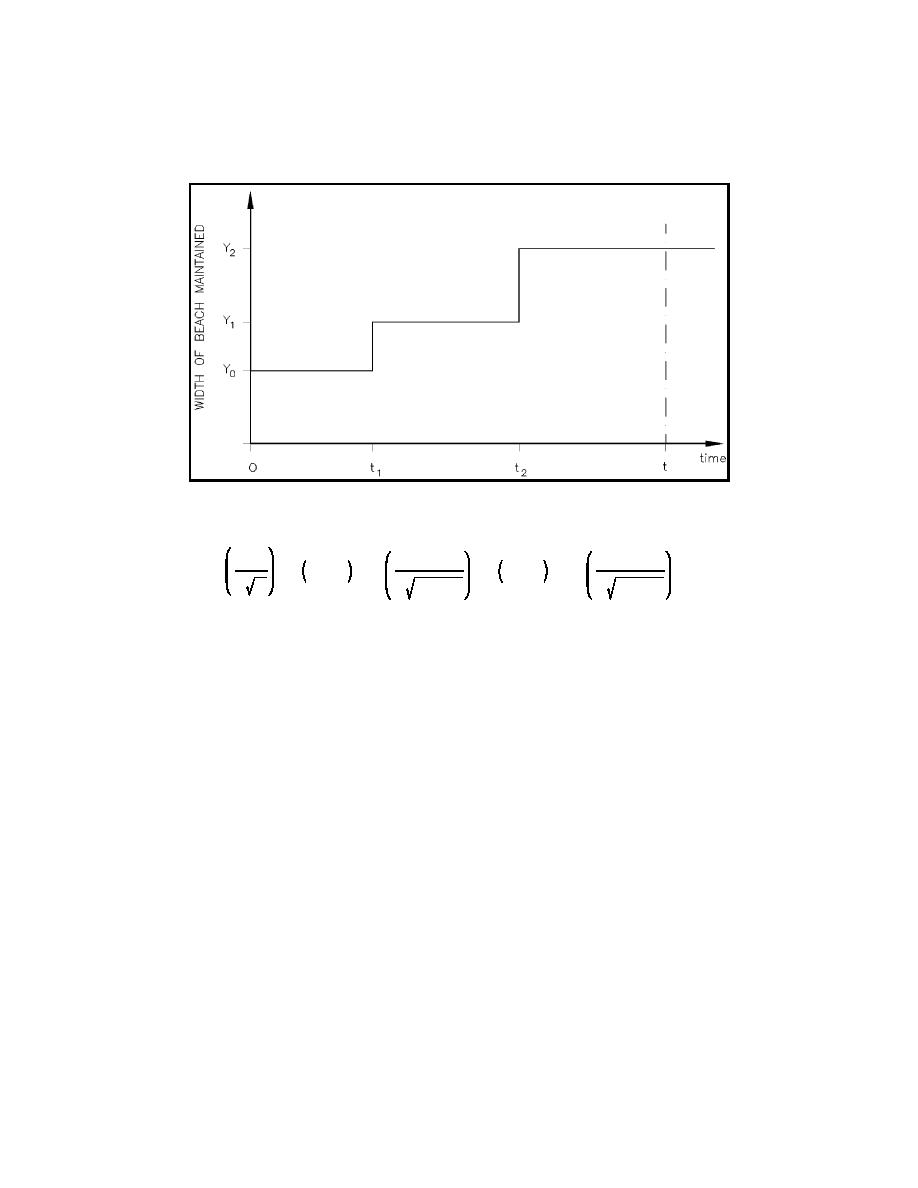
EM 1110-2-1100 (Part III)
30 Apr 02
stages with the plan view dimension of the fill as a function of time given in Figure III-2-46. For this
particular scenario, the solution (at time t) analogous to Equation 2-37 only with the planform beach built in
staged increments (as per Figure III-2-46) is:
Figure III-2-46.
Width of maintained beach (x < 0) as a function of time
x
x
x
y ' Yo erfc
% Y1 & Yo erfc
% Y2 & Y1 erfc
(III-2-39)
2 εt
2 ε (t & t1)
2 ε (t & t2)
which can be nondimensionalized and solved utilizing the nondimensionalized solution graph provided by
the simpler case of Equation 2-37 given in Figure III-2-34.
(25) It should be recognized that the linearized form of shoreline solution will produce a higher rate of
shoreline change by overestimating the longshore transport rate because 2αb > sin(2αb) in the linearized sand
transport solution. Thus, under properly estimated parameters for idealized conditions, a higher rate of
attenuation of beach fills will be obtained than is expected to occur in reality, thus providing a conservative
answer to project losses.
(26) As a final point, it is noted that when wave angles are very large and the difference between the
wave direction and shoreline orientation exceeds 45 deg, the true form of the shoreline diffusivity constant
based on the nonlinear sin(2α) term in the sand transport equation will be negative, which totally changes the
characteristics of the shoreline change model equation. In these cases, the shoreline evolves in an unstable
manner equivalent to running the previous stable solution forms backwards through time. In other words,
a shoreline having a perturbation placed on it (such as a beach fill) would see a growth of the perturbation
toward an elongated cuspate feature as time progresses rather than seeing the smoothing out of the
perturbation as given in solutions of the preceding paragraphs. This type of shoreline instability may possibly
explain certain shoreline features such as cuspate forelands which are ubiquitous on elongated bays where
the dominant wave action is along the major axis of the bay and at large angles to the prevailing shoreline
trends (Walton 1972).
Longshore Sediment Transport
III-2-75


 Previous Page
Previous Page
